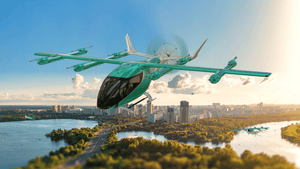Uber Ships Self-Driving Cars to Arizona After California Ban
A few days of regulatory tussles were enough for Uber Technologies Inc. to pull its fleet of self-driving cars from the streets of San Francisco and send them instead to friendlier territory in Arizona.
December 23, 2016

A few days of regulatory tussles were enough for Uber Technologies Inc. to pull its fleet of self-driving cars from the streets of San Francisco and send them instead to friendlier territory in Arizona.
The California Department of Motor Vehicles banned Uber’s self-driving cars from San Francisco on Wednesday, just days after they first deployed. In response, Uber picked up and moved out.
“Our cars departed for Arizona this morning by truck,” Uber said Thursday in an e-mail. “We’ll be expanding our self-driving pilot there in the next few weeks, and we’re excited to have the support of Governor Ducey.”
Arizona Governor Doug Ducey wooed Uber on social media Wednesday evening, when the ride-hailing company pulled its self-driving test from San Francisco. “California may not want you; but AZ does!” he wrote on Twitter. The next morning, Uber’s fleet was headed his state’s way.
The self-driving cars aren’t driving themselves to Arizona. Uber released seven photos showing the gray Volvos being loaded onto flatbed trucks.
California’s move to revoke registrations for the vehicles affected 16 Uber automobiles, the Department of Motor Vehicles wrote in an e-mail. The agency also issued a letter to the company inviting it to apply for a registration for autonomous vehicle testing, saying it has a dedicated team to expedite the process. Uber said it had stopped using the cars in the state.
Uber last week began rolling out its self-driving vehicles in its hometown of San Francisco without seeking permission from the state’s DMV. The company argued it hadn’t behaved any differently than Tesla Motors Inc., which makes electric cars that include a feature called Autopilot.
Almost since its inception in 2009, Uber has run afoul of regulators in its home state and elsewhere, usually over taxi and labor rules. In the case of self-driving cars, Uber said its vehicles require oversight by a human driver and therefore shouldn’t qualify under California’s autonomous-driving rules. The state attorney general threatened legal action last week if the company continued operating the automobiles without a permit.
The California vehicle code defines an autonomous vehicle as a “technology that has the capability to drive a vehicle without the active physical control or monitoring by a human operator.” The state DMV requires autonomous vehicle providers to register, something that Alphabet Inc.’s Waymo, Mercedes-Benz, Nissan Motor Co., General Motors Co.’s Cruise and Baidu Inc. have done.
Companies are required to file reports when drivers intercede or their cars crash. Tesla doesn’t file any such reports and similarly believes it doesn’t meet the requirements for autonomous vehicles.
Alphabet’s car project started testing in Arizona earlier this year, part of a geographic expansion from its California home that also included Kirkland, Washington, and Austin, Texas. The moves came after California’s DMV released rules in 2014 that required a human driver to take control of autonomous vehicles. That meant steering wheels, brake and accelerator pedals had to be in the cars, and Alphabet’s small bubble test vehicles were designed without those controls.
Uber still operates self-driving vehicles in Pittsburgh, where the program began in September. San Francisco was the second city where Uber customers could request a ride in a self-driving car.
About the Author
You May Also Like






